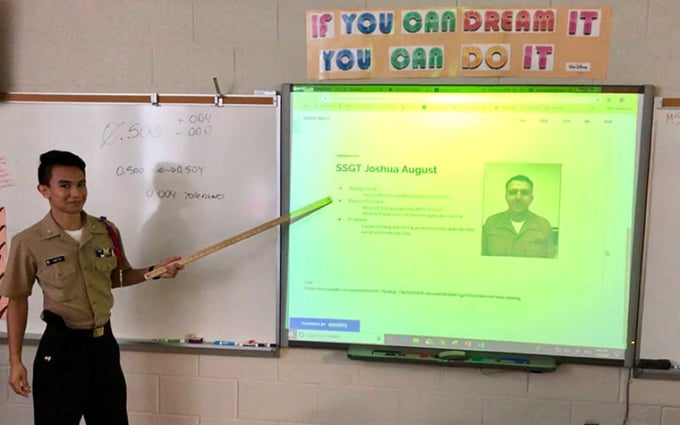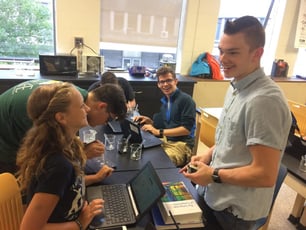Valerie Zienty is a PLTW and mathematics teacher at Worcester Technical High School in Newark, Maryland. She loves to explore, teach, and read. Her goal is to spread her enthusiasm for math, science, and engineering to as many people as possible.
Our first PLTW Engineering cohort was among the graduating class of 2012. Since then, about 300 students have gone through the process of identifying an issue and then researching, designing, and testing a solution, ultimately presenting their solution to a panel of engineers.
The Engineering Design and Development class, in my opinion, solves the biggest hurdle that my students face in their school career: ownership of learning.
Students are routinely asked to do something that they didn’t pick themselves. The “ownership of learning” issue transcends complexity levels or impact of social media on their attention span, because projects often fail to tap into students’ intrinsic motivation to learn.
Since capacity to learn is unexploited, students don’t see the difference between learning for the future or learning to pass the test.
In Engineering Design and Development, it’s different. Still, although students pick their own issue to solve, I have noticed students’ tendency to lean toward certain topics:
- Wheelbarrow modifications (since my students come from farms)
- Cell phone-related problems (since they are teenagers)
- Car organization problems (since they just started driving)
- Shoe issues (since theirs are too dirty, they need too many, etc.)
I know that students are supposed to challenge themselves with one of those “don’t you hate it when…” issues of the world, but the reality is that “the world” of the majority of my students seemed too small.
As a result, I decided to start the year with a Community Interviews project that is completed on students’ own time. My goal was for students to take a fresh look at our community and learn that one teenager can make a huge impact on the community, that innovation takes time, and that success relies on good relationships and communication among all stakeholders.
How to Bring the Project to Your Classroom
Here is what I give to students:
Why interview?
In order to gain insight into different businesses and problems they are experiencing, you have to interview three individuals in our community. Local industries and businesses can be very helpful because they have a vested interest in our community and may be able to meet with you personally. There are no stipulations about the types of questions that need to be asked.
Whether talking with industry or post-secondary experts, be sure to include the following in your initial conversation:
- Your name, school, and location
- Description of Engineering Design and Development and the purpose of the project
- Explanation of how you received their contact information
- Explanation of how, specifically, the expert can help you
- Student and instructor contact information
Close every contact, whether verbal or written, whether positive or negative, with a "thank you." You should also ask for a lead to another business or person who might provide additional information.
You will report to your fellow classmates in the following format:
Three PowerPoint slides that contain the picture of the respondent, respondent’s background, explanation of why the respondent was chosen, and problem that they are experiencing.
What I've Learned
I found that this project helps students overcome the fear of talking to adults, expands their “problem” pool, and promotes our program. Some students record problems that are too broad (increase of crime reporting in our area); some students record problems that may affect only one specific business or family (storage space or corrosion of parts); but some come away with problems that they feel good about solving.
One project that started off with a community interview became a collaboration between PLTW Biomedical Science and PLTW Engineering students. It resulted in an elaborate and award-winning emergency department waiting room redesign.
Do all community interviews result in something tangible? Not even close! However, I will continue on with the assignment and look forward to “remixes” that might come out of this blog post!
PLTW’s blog intends to serve as a forum for ideas and perspectives from across our network. The opinions expressed are those of each guest author.


